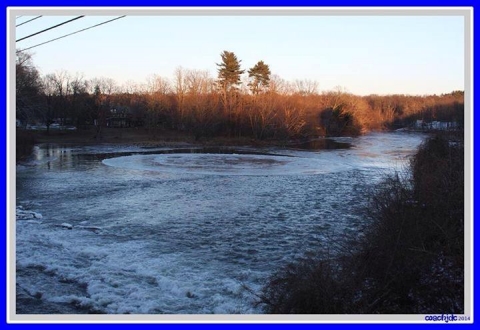Meet the elusive ice circle: An unusual ice formation that occurs on slow-moving water during intense cold weather. In the video above, posted today by the folks at the Woodstock Inn On The Millstream, a broad ice circle rotates slowly in the Millstream's gentle flow.
Another ice circle was spotted recently on the Esopus Creek by John Crews, who shared the photo with Hudson Valley Weather.
A couple of years ago, Gary Lane, a river guide on Idaho's Salmon River, snapped a beautiful photo of an ice circle that went viral on the internet. Since then, he's become something of an expert on the phenomenon. In a news article about his famous photo, Lane explains:
“The circularity of the motion, during the melting process, cause various sized islands, roundish in shape, to calve off,” he said. “They continue to spin in the eddy, until other chunks of ice coming downriver bump into them. Gravity brings everything to the center. Then more ice is added and they get bigger, or they get cast into the main current, float downriver and break up as they crash into various path-laden obstacles.”
Lane, who started photographing the ice circles on 35 mm cameras in the 1980s, sounds surprised that more people haven’t seen the ice circles on other rivers.
“It’s really a pretty common thing,” he said. “I already had several on film when I took that picture that’s now famous. I’ve seen them for 30-some years. They all occur the same places every year. And it’s dependent on the weather, how long it’s cold. They are always different sizes and shapes, and how long they last varies. As it’s forming or as the river is thawing, they can break off and be created again. They are formed in giant eddies because it takes that circular motion to create them. The bigger ones take a bigger or more powerful eddy to create it.”
Catskills readers: Have you seen one of these in the wild? Share your photos or video with us at editor@watershedpost.com.
Below: Photo of ice circle on the Esopus Creek by John Crews. Reproduced by permission.















